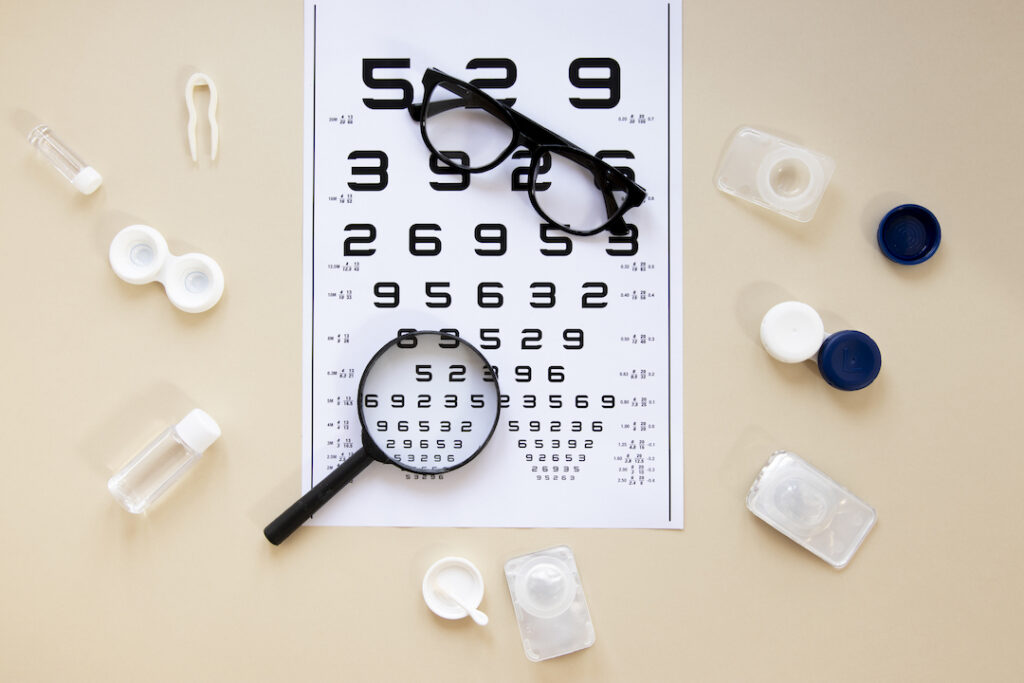The Rise Of Self-Eye Exams: Can They Replace Visiting An Eye Care Provider?
(Posted on Sunday, October 29, 2023)

This article was published on Forbes on 10/23/2023.
This story is part of a series on the current progression in Regenerative Medicine. This piece is part of a series dedicated to the eye and improvements in restoring vision.
In 1999, I defined regenerative medicine as the collection of interventions that restore to normal function tissues and organs that have been damaged by disease, injured by trauma, or worn by time. I include a full spectrum of chemical, gene, and protein-based medicines, cell-based therapies, and biomechanical interventions that achieve that goal.
In eye care, refractive error is when the eye fails to bend the light, causing blurred vision. Refractive errors such as myopia, hyperopia, and astigmatism have become increasingly common, with the prevalence of myopia alone expected to double by 2050 and impact 5 billion people worldwide. Currently, the most common method for diagnosing refractive errors is through a subjective manifest refraction test, which an eye care provider typically administers.
However, in recent years, there has been a rise in the popularity of self-eye exams for refraction. A self-eye exam entails using digital technology to perform a visual acuity test from the comfort of your home. This approach can benefit those who cannot visit an eye care provider due to scheduling conflicts or geographical limitations. Still, these exams do not offer screening or diagnosis of eye health or other diseases and do not replace an eye health exam with a licensed provider.
Visibly: An FDA-Approved Self-Exam
One such self-eye exam option is the Visibly Digital Acuity Product, which the FDA recently approved. This web-based, self-guided software application is designed for adults aged 22 to 40 who can perform a self-test at home to evaluate visual acuity with or without correction. The application is intended to provide supportive recommendations alongside the patient’s medical history, corrective eyewear prescriptions, and subjective vision data.
While the Visibly Digital Vision Test web application is a powerful tool for assessing visual health, it can never replace the need for a thorough eye exam by a licensed eye care professional. It is designed to be used with professional care as a supplementary tool, providing valuable insights into your overall eye health. This comprehensive test suite includes evaluations for visual acuity, color vision, contrast, brightness perception, and stereopsis for depth perception.
Clinical trials have supported web-based eye testing as a valid and safe method for measuring visual acuity and refractive error, particularly for mild myopia.
Other Clinical Trials Support Self-Exams
A recent study by the University Medical Center Utrecht in the Netherlands found that web-based eye testing can be a reliable substitute for the subjective manifest refraction test. The study evaluated a web-based tool for measuring visual acuity and refractive error in clinical trials. The study found that the web-based test was just as practical as the traditional subjective manifest refraction method, with a strong correlation to the reference test and little difference in uncorrected visual acuity between the two methods.
The web-based tool’s prescription effectively improved visual acuity, especially for people with mild myopia. This indicates that the web-based refraction assessment method validated by the trial is convenient and user-friendly for achieving accurate visual acuity correction in screening applications.
Another clinical trial, conducted at the University of California, San Francisco, also aimed to compare the accuracy of a home vision screening test with the standard Snellen visual acuity test conducted by an in-office technician to screen and prioritize patients remotely. The study involved patients who had scheduled ophthalmology appointments at the clinic. The home vision test used a modified eye chart in a PDF format that could be either printed or viewed on a monitor.
The results indicated that there was a minimal difference on average between the two methods. The study found a high level of agreement between the results obtained from the home vision test and those obtained through in-office measurement.
Toward the Future
Refractive errors such as myopia, hyperopia, and astigmatism are becoming increasingly common, affecting many worldwide. While the traditional subjective manifest refraction test remains the most common method for diagnosing refractive errors, self-eye exams are gaining popularity.
The FDA has recently approved the Visibly Digital Acuity Product. This self-guided software application allows adults to perform a self-test to evaluate their visual acuity with or without correction. Clinical trials have shown web-based eye testing to be a safe and valid method for measuring refractive error and visual acuity, offering a reliable substitute for the traditional subjective manifest refraction test. Additionally, a high level of agreement has been found between the results obtained from home vision tests and those obtained through in-office measurement.
While self-eye exams can be a convenient and helpful tool, they should be considered supplementary and never replace a thorough eye exam by a licensed eye care professional.
To learn more about the eye, read more stories at www.williamhaseltine.com

